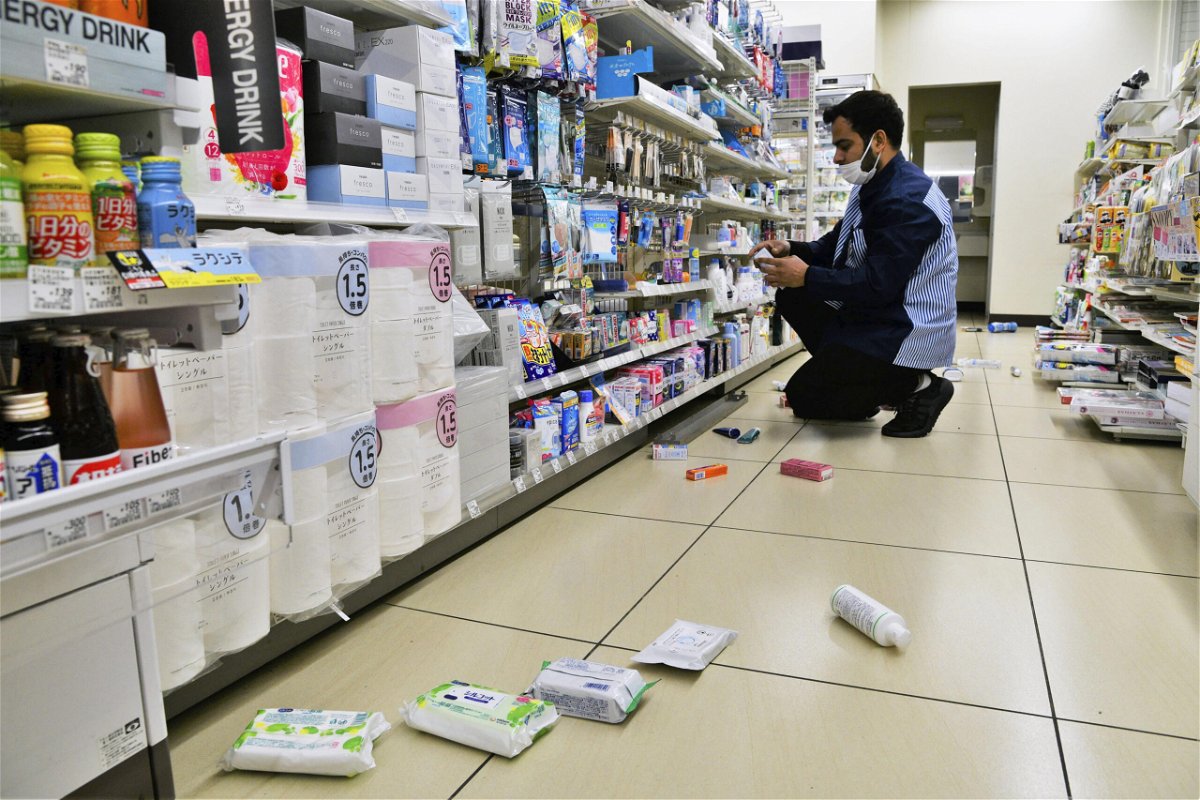4 dead after 7.4-magnitude earthquake hits coast off Japan’s Fukushima prefecture

By Emiko Jozuka, Mayumi Maruyama, Karen Smith and Brandon Miller, CNN
A 7.4-magnitude earthquake hit eastern Japan late Wednesday night, killing at least four people and injuring over 100 others, and cutting power to millions of homes.
One of the people who died was a man in his 60s who lived in the city of Soma, the local disaster prevention office said on Thursday.
The quake hit off the coast of Japan’s eastern Fukushima prefecture, a region devastated by a powerful quake and tsunami 11 years ago that resulted in a nuclear power plant meltdown.
The quake was originally designated 7.3-magnitude, but was upgraded to 7.4 on Thursday.
A tsunami advisory was issued after Wednesday’s quake for the coastal prefectures of Fukushima and Miyagi, but was lifted on Thursday morning and Japanese Prime Minister Fumio Kishida later said “no abnormalities” had been detected at any of the country’s nuclear plants.
The quake had a preliminary epicenter depth of 60 kilometers (37 miles), said Japan’s Meteorological Agency. It warned of tsunami heights reaching up to 1 meter above normal tidal levels, with the initial waves reaching shore around midnight local time (11 a.m. ET).
About an hour and a half after the earthquake struck, an 8-inch tsunami occurred along the coastline of Japan’s Miyagi prefecture, according to the agency, which urged people in affected areas to stay away from the coast.
A bullet train derailed near Fukushima as a result of the earthquake but no injuries were reported, Kishida said at a press conference. According to public broadcaster NHK, 78 people were trapped for four hours after the high-speed train derailed, but escaped uninjured through an emergency exit.
People injured from the quake have been taken to the hospital in Fukushima’s Soma city, Kyodo News agency reported, without specifying the number of people injured. Power has been restored in all of Tokyo, Tokyo Electric Power said.
The Meteorological Agency on Thursday urged the public to watch out for more seismic activity in the next few days. Masaki Nakamura, an official from the agency, urged people in affected areas to stay away from the coast and not to enter the sea until tsunami advisories had been lifted. He also urged people to remain vigilant over the risk of mudslides.
The epicenter of Wednesday’s quake was 55 miles (89 kilometers) from that of the devastating 2011 quake that caused a tsunami with 30-foot waves that damaged several nuclear reactors in the area — resulting in the worst nuclear disaster since the 1986 Chernobyl incident. More than 22,000 were killed or went missing in that disaster. Deaths were caused by the initial earthquake and tsunami and by post-disaster health conditions caused by the radiation leak.
The 2011 Japan earthquake was 9.1 magnitude, some 63 times stronger, and released about 500 times more energy than Wednesday’s quake.
The-CNN-Wire
™ & © 2022 Cable News Network, Inc., a WarnerMedia Company. All rights reserved.